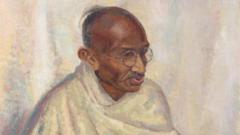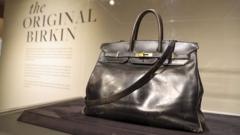BOSTON (AP) — When Jim Sanborn was commissioned to create a sculpture at CIA headquarters, he aimed to reflect the world of spies and secret codes.
The outcome was Kryptos, a 10-foot-tall, S-shaped copper screen that appears like a sheet of paper emerging from a fax machine. One side showcases staggered alphabets essential for decoding the four encrypted messages found on the reverse.
“At the time, codes and encoding were esoteric,” Sanborn noted. “I wanted to demystify them and make it engaging. Any artist hopes to hold a viewer's attention for as long as they can.”
The first three encrypted messages on the sculpture, known as K1, K2, and K3, were resolved swiftly after its dedication in 1990. However, the mystery of the fourth code, K4, persists, captivating codebreakers and enthusiasts alike for over 35 years. A dedicated codebreaker has contacted Sanborn weekly for the last two decades, prompting the artist to impose a $50 fee for solution inquiries to manage the influx.
As Sanborn, now 79 and facing health concerns, prepares to auction the solution to K4, he seeks a new owner for Kryptos, hoping they will respect its secrets and engage with fellow enthusiasts.
Boston-based RR Auction launched the bidding last month, with current bids reaching $201,841. “Kryptos has turned into a global phenomenon,” stated Bobby Livingston, RR Auction's executive vice president. “K4 has posed challenges for professionals and amateurs alike. The archive’s winner will hold Kryptos’ secrets.”
This auction includes everything needed to decode K4 along with an alternative interpretation, K5. It will also present the original coding charts for K1, K2, and K3, which Sanborn previously vetted with the CIA’s Department of Historical Intelligence to ensure the content remained secure.
Sanborn’s installations span around 50 public displays, but Kryptos stands out. The ciphertext has appeared on the cover of Dan Brown’s “The Da Vinci Code” and is referenced in “The Lost Symbol.”
This auction faced complications when two enthusiasts uncovered original scrambled texts in the Smithsonian’s Archives of American Art. Initially upset, Sanborn now continues with a more extensive auction, but with caution, having sought nondisclosure agreements from the discoverers.
While Kobek aims to respect the discovery's significance, he acknowledges it connects to the broader narrative of cryptography. “The connection to historical cryptography can't be dismissed,” he emphasized. “It transcends mere auction promotion.”















